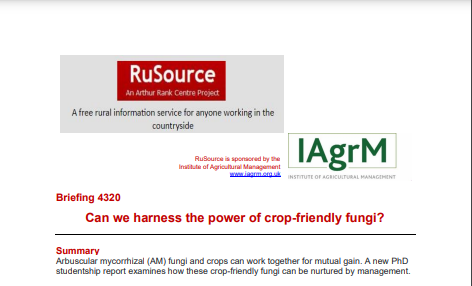Most land plants, including agricultural crops, form beneficial (symbiotic) relationships with AM fungi. When these fungi colonise root cells, they form branch-like structures (arbuscules) that can help transfer nutrients (largely phosphate and nitrogen) to crops. These fungi may benefit crops in other ways too. For example, some studies show a link between them and crop tolerance to pests, pathogens and drought. However, some farming practices can reduce the abundance and diversity of AM fungal populations:
- Artificial fertilisers (reducing AM fungi supply of nutrients to crops)
- Soil disturbance (damaging mycorrhizal networks)
- Bare land (breaking down mycorrhizal networks)
In 2018, AHDB and the AgriFood Charities Partnership funded a PhD studentship project to develop a better understanding of how to tap in the power of these root-loving organisms. Working with NIAB and the University of Cambridge, PhD student George Crane has now submitted the project’s findings in a new report.



